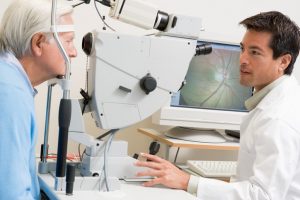 Vision is something many of us take for granted. As we age, however, our vision naturally declines, which can affect our overall health and satisfaction in daily activities and decrease independence and social interactions. People over the age of 50 are at a naturally increased risk of developing many age-related eye conditions, including cataracts, glaucoma, macular degeneration, and diabetic eye disease, and it is reported that around one in four adults will develop one of these conditions.
Vision is something many of us take for granted. As we age, however, our vision naturally declines, which can affect our overall health and satisfaction in daily activities and decrease independence and social interactions. People over the age of 50 are at a naturally increased risk of developing many age-related eye conditions, including cataracts, glaucoma, macular degeneration, and diabetic eye disease, and it is reported that around one in four adults will develop one of these conditions.
A recent data analysis performed by the University of Michigan, called the National Poll on Healthy Aging, found that by having regular vision exams, you can lower their risk of developing such vision conditions.
Advertisement
The survey asked participants aged 50–80 from across the United States to answer questions about their vision and their vision healthcare experiences. The results showed that the clear majority of adults over the age of 50 wear either glasses or corrective contact lenses. Most of these participants felt their glasses did help them to see and ranked their vision as “excellent” or “very good.” Those with and without glasses who ranked their vision as “excellent” or “very good” were also shown to be the group with the best overall health.
Most Doctors Do Not Ask About Eye Health
Interestingly, the researchers found that many respondents stated their primary health care provider did not ask them about their eye health or vision. Only one in seven participants said they had their vision checked by using an eye chart at a visit with their regular doctor. Of those whose doctors did ask them about their vision, 91 percent reported visiting an eye doctor for a check-up regularly versus only 77 percent of those whose doctors did not ask about their vision.
“Most respondents got an eye exam either to have their prescription checked (34 percent), to make sure their vision was okay (30 percent), or because they were having a problem with their eyes or vision (18 percent). Top reasons why respondents had not had an eye exam in three or more years included: had not had any problems with their eyes or vision (42 percent), did not get around to it (36 percent), cost (25 percent), not covered by insurance (23 percent), and/or that it was easier to buy reading glasses over the counter (23 percent),” write the researchers.
These are troubling statistics, as most eye conditions and issues of vision loss are avoidable, but the first step to preventing blindness or loss of vision is visiting an eye doctor (either an optometrist or ophthalmologist) regularly to assess vision and eye health. These findings emphasize the importance of primary health care providers asking patients about their vision and eye health and reinforcing the need to visit an eye doctor every one-to-two years. Education and awareness are crucial parts of lowering the incidence of age-related avoidable eye conditions and vision loss in the American population over the age of 50 years old.
Also read:
- Top foods to boost your eyesight and vision
- Yoga for eyes: Easy eye yoga poses to improve vision
- Home remedies to improve vision and eye health
- Bulging Eyes (Protruding Eyeballs): Causes, Symptoms, and Exercises
